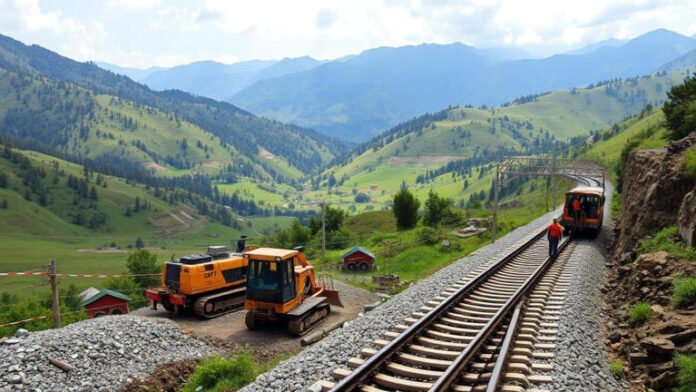The Central Government has approved the final location survey (FLS) for a new railway line in Sikkim. This move marks a milestone in the long-awaited plan to integrate the Himalayan state into the national railway network, which will not only ease transportation challenges but also boost tourism, trade, and strategic infrastructure in the region.
A Landmark Decision for Sikkim
The Ministry of Railways has granted approval for the final location survey of the Nangaldam to Rangpo railway line extension, with the long-term goal of connecting Rangpo to Gangtok, the capital of Sikkim. This survey, once completed, will provide a detailed feasibility report, allowing Indian Railways to move forward with the construction phase. The project is being seen as a part of the Centre’s commitment to improving infrastructure in the Northeastern states and ensuring greater national integration.
Historical Background
Sikkim, despite its strategic location bordering China, Bhutan, and Nepal, has remained isolated from the Indian railway grid. At present, the nearest railway station is in New Jalpaiguri, West Bengal, over 120 km from Gangtok. Recognizing the importance of this gap, the Government had earlier initiated work on the Sevoke-Rangpo rail line, a project currently under progress and expected to be completed by 2025. The newly approved final location survey will explore the feasibility of extending the line further to Gangtok, completing the dream of rail access to Sikkim.
Read More: Subal Singh Lake (Twisinta Baan): A Peaceful New Destination to Explore in Tripura
Survey Details and Route
The final location survey will be conducted by the Northeast Frontier Railway (NFR), which is responsible for rail operations in the region. The survey will include detailed geological, hydrological, and topographical studies of the terrain. Sikkim’s challenging geography, marked by steep hills, river valleys, and fragile ecosystems, requires precise planning and advanced engineering techniques. The survey will determine the most suitable route for the new railway line, estimate the total cost, and identify potential construction challenges.
Strategic and Economic Importance
Apart from improving passenger travel and boosting tourism, the new railway line in Sikkim carries significant strategic value. Sikkim shares a sensitive border with China, and rail connectivity will allow faster mobilization of resources in case of national emergencies. This development aligns with India’s broader efforts to strengthen border infrastructure and ensure logistical efficiency in high-altitude areas.
Economically, the railway will open up new markets for local farmers and businesses. It will facilitate the transport of perishable goods, handicrafts, and construction materials, thus reducing costs and encouraging entrepreneurship. Moreover, improved Sikkim connectivity will attract investment in hospitality, education, and healthcare sectors.
Environmental and Social Impact
While the project promises major benefits, the authorities are expected to conduct Environmental Impact Assessments (EIAs) and consultations with local communities before commencing construction. Sikkim, known for its biodiversity and eco-friendly policies, will require careful handling of the landscape to avoid ecological disruption.
Looking Ahead
With the Centre’s approval of the final location survey, the Sikkim railway project is gaining long-overdue momentum. Once the survey is complete and the route is finalized, construction work could begin within a few years, subject to funding and necessary clearances. The Indian Railways is also exploring tunneling and viaduct technologies to overcome the difficult Himalayan terrain.
The Centre’s nod to the final location survey for the Indian Railways Sikkim expansion is a historic move for one of India’s most scenic yet isolated states. It signals a new era of growth, accessibility, and national integration for Sikkim. As the project progresses, it holds the promise of transforming the state’s socio-economic landscape while reinforcing India’s presence in a geopolitically crucial region.

